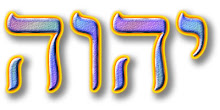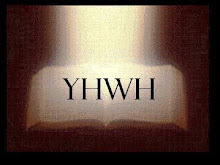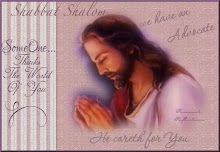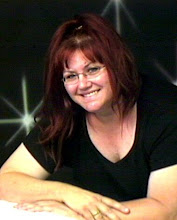2 Nissan/Aviv Sixth Day Yom Ha'shee'shee
At this time...in this new month...our Elohim's first month of months we start our Torah study in Leviticus. It is so wonderful to me that it is about the rules and regulations of the Priests and about the sacrifices.
Yes, Leviticus is a hard book to read and understand but if we look at it with the eyes of enlightenment and the knowledge of Yeshua...we can see more clearly the Way of Yeshua.
And, knowing this is the month of Passover....this is the month of redemption..the month of Judah.....we see Yeshua! Do you see Him?
Here is a teaching from Hope4Israel...enjoy and See the LORD!
בס”ד
Parashat Vayikra (and He called…) Lev.1:1-5:26
Haftarah: Isaiah 43:21-44:23
This week we begin a new book in the Torah, the third one called Vayikra or Leviticus. This parasha focuses on the various offerings and the instructions surrounding each of them. Each week as I read the Torah portion I pray that G-d will reveal something new to me and place a verse or a passage upon my heart. This week as I was reading I noticed a detail that I had not really thought much about before. Moses was told by G-d to instruct the priests that when one of them slaughters a sheep or goat that he should do so on the northern side of the Altar.
“He shall slaughter it (the sheep or goat) at the northern side of the Altar before HaShem; and the sons of Aaron, the Priests, shall throw upon the Altar, all over.” Lev. 1:11
What is one to learn from this commandment? First of all I was reminded that historically the Israelites lived on the southern side of Jerusalem during the days that the Temple stood. Hence, there was sort of separation between the people and the priest, who was G-d’s servant that stood on the northern side of the Altar when he slaughtered the offering. It was this separation between G-d and the people that brought about the need for an offering in the first place.
We have just entered the Jewish month of Nissan (or Aviv). The festival of Passover occurs in this month. We know that Messiah Yeshua is our Passover offering Who laid down His life on the 14th day of Nissan, the exact day that the Passover sacrifice was offered. Although no one knows for certainty where Messiah was buried, it is most interesting there is a cliff just outside the Old City of Jerusalem that looks like a skull. One cannot be sure whether this is Golgotha or not, but in the general area of this place is where the kings of Israel were buried. By the way, all of these things are on the northern side of the Old City. Scripture informs the reader that the tomb in which Yeshua was buried was close to the place where He was crucified (see John 19:41) and the tomb was located in a garden. The place where the cliff that looks like a skull is located contains a first century garden and also a tomb from the first century.
History tells us that the Romans would crucify people in a public place; often times their executions stakes were along roads. The place where the cliff is located is where a major first century road (and intersection) was located.
It seems that Yeshua’s death may very well have occurred on the northern side of the city. What is the significance of this? Yeshua, Who never sinned, is far removed from you and me who are sinful. Perhaps this is reflected in HaShem’s instructions for the priests to stand on the northern side of the Altar (the opposite of where the people dwelt). The priests had to purify themselves to serve in this capacity. The purpose of the offering was to reconcile the one who brought the sacrifice back to G-d. And this is the exact purpose that Messiah laid down His life; in order that man could be eternally reconciled to G-d through the Passover offer; which was the offering for redemption. The fact that the priests were commanded to sprinkle the blood all around, may signify G-d’s desire that all people receive the redemption that Yeshua’s blood brings to all who believe in Him.
Shabbat Shalom!
Subscribe to:
Post Comments (Atom)










No comments:
Post a Comment